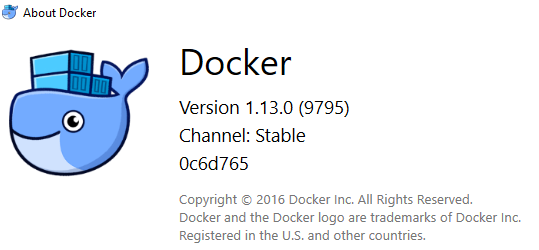Canonical today announced a new version of Ubuntu designed specifically for smartphones to power everything from entry-level handhelds to "high-end superphones" that double as PCs.
The move by Canonical was long expected, although it is coming late to a
market already dominated by the iPhone and Android-based devices. Ubuntu for
phones isn't a whole new operating system. Instead, it is a "smartphone
interface" for Ubuntu. This helps Ubuntu differentiate from other phone
operating systems by Voltron-ing itself into a full-fledged PC when docked to a
monitor, mouse, and keyboard.
Ubuntu has previously been in the smartphone game with Android devices
that become a modified Ubuntu PC when docked. This didn't make much of an
impact, as the most prominent such device—the Motorola Atrix and lapdock—has
been discontinued.
Ubuntu for Android is a separate product, which Canonical will continue
to maintain. The newly announced version of Ubuntu will run on smartphones
without any reliance on Android, however. This helps fulfill founder Mark
Shuttleworth's promise of having Ubuntu become one operating system from
phones to supercomputers.
There will be many challenges, primarily getting hardware partners on
board. Canonical's press release today included supporting quotes from ARM and
the makers of the Qt application framework, but none from smartphone
manufacturers. On a new webpage describing Ubuntu for phones,
Canonical tries to lure phone makers with the promise that "[w]e have the
needs of network operators, OEMs, and ODMs in mind in bringing Ubuntu to the
phone. It offers great performance on handsets with a low bill of materials,
while opening up new opportunities for phone and PC convergence at the top end of
the market."
Canonical will share more details this afternoon in a press conference
and we will update this story with more information. For now, here is more of
what we know.
The Ubuntu interface will feature the following:
1. Edge magic: thumb gestures from all four edges of the screen enable users to find content and switch between apps faster than other phones.
2. Deep content immersion—controls appear only when the user wants them.
3. A beautiful global search for apps, content, and products.
4. Voice and text commands in any application for faster access to rich capabilities.
5. Both native and Web or HTML5 apps.
6. Evolving personalized art on the welcome screen.
Entry-level Ubuntu phones will require a 1Ghz Cortex A9 processor and
between 512MB and 1GB of memory, while the high-end superphones that double as
PCs will require a quad-core A9 or Intel Atom processor and at least 1GB RAM.
Canonical will try to avoid the type of fragmentation that affected
Android by providing "engineering services to offload the complexity of
maintaining multiple code bases… freeing the manufacturer to focus on hardware
design and integration," the company said. "For silicon vendors,
Ubuntu is compatible with a typical Android Board Support Package (BSP). This
means Ubuntu is ready to run on the most cost-efficient chipset designs."
Canonical also said Ubuntu for phones "doesn’t have the overhead of
a Java virtual machine, so all core applications run at full native speeds with
a small memory footprint." A QML toolkit and sample application are
available for developers to download. A forthcoming Ubuntu software development
kit will make it easier to build applications that run on both the desktop and
phone.
The Ubuntu Software Centre will be extended to phones for use as an app store,
but sadly it sounds like Ubuntu phones will get some of the same carrier-built
apps that come with many Android devices and are generally
useless. Canonical said, "Ubuntu offers compelling
customization options for partner apps, content, and services. Operators and
OEMs can easily add their own branded offerings. Canonical’s personal cloud
service, Ubuntu One, provides storage and media services, file sharing and a
secure transaction service which enables partners to integrate their own
service offerings easily."
Web apps will also play a big role, with Canonical's "unique
Web app system [that] lets you quickly adapt any Web property for installation
as an app on the phone, running independently of the browser, with its own icon
and access to system services."
In addition to low-cost smartphones, Ubuntu will help OEMs build a
"single enterprise superphone" that converges phone, PC, and thin
client into one (in Canonical's words). Canonical noted that Asus, Dell, HP,
and Lenovo all certify the majority of their PCs to run Ubuntu, but it did not
say whether any of these companies plan to make any smartphone/PC hybrids using
Ubuntu. That will be one of the things we'll try to find out at this
afternoon's press conference, along with timing on when an Ubuntu phone will
actually hit the market.
UPDATES: Here are a few more tidbits we've learned from Canonical's press
conference:
·
No carriers and handset makers were announced, but Shuttleworth is
aiming for a phone to be released in the last quarter of 2013 or the first
quarter of 2014.
·
Given that Ubuntu is open source, a full Ubuntu image that can run on a
Galaxy Nexus will be available within a few days or weeks.
·
Ubuntu 14.04 (the release in April 2014) will be one image that works
across phones, tablets, and desktops.
·
Ubuntu for Android is not dead. "We do expect Ubuntu for Android to
ship on marquee devices in 2013, and it will have a multi-year lifecycle,"
Shuttleworth said. "It enables our partners and ourselves to start opening
up the convergence superphone market where you have a phone that can also be a
desktop when you'd dock it, without losing some of the things you value in
Android itself."
·
Building a market for phones that double as PCs has "been a long
and slow process because it's essentially a category that doesn't exist today,"
Shuttleworth said.
·
Canonical gave reporters some hands-on time with an Ubuntu phone
prototype in London today, and will do the same next week at the Consumer
Electronics Show in Las Vegas.








